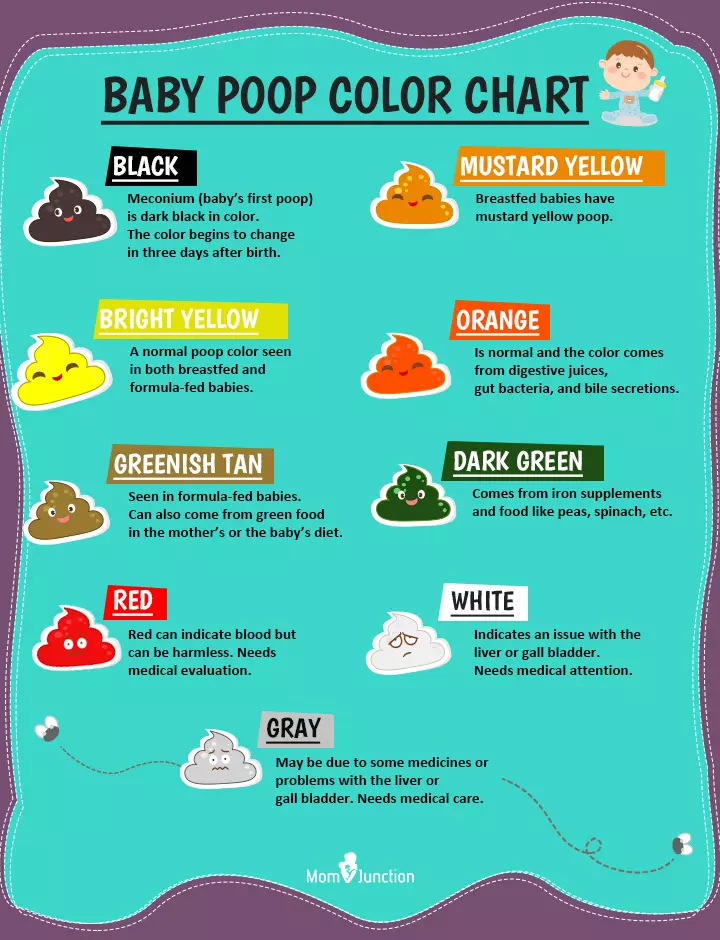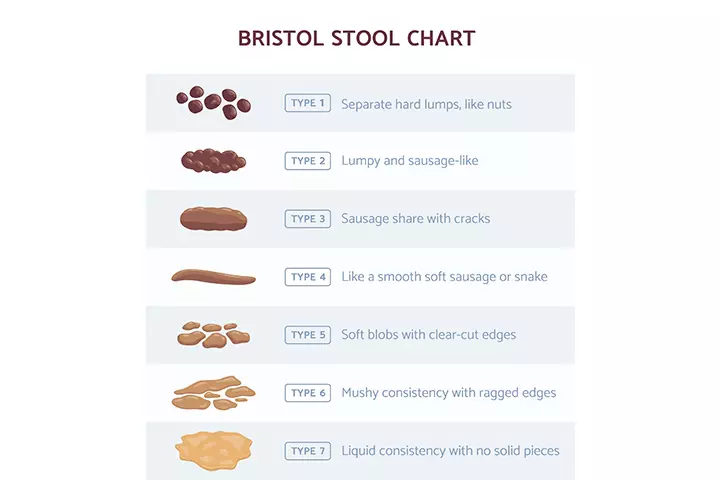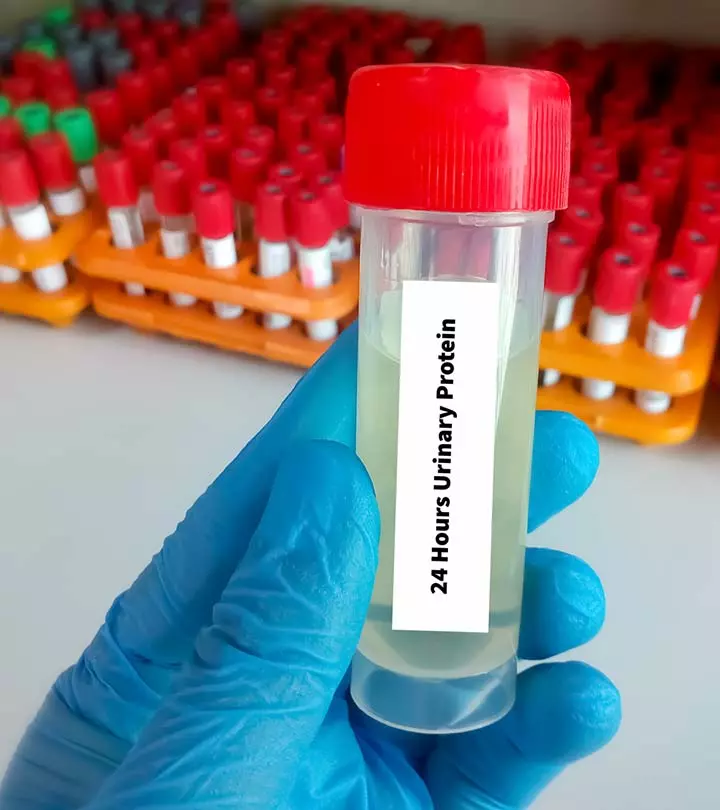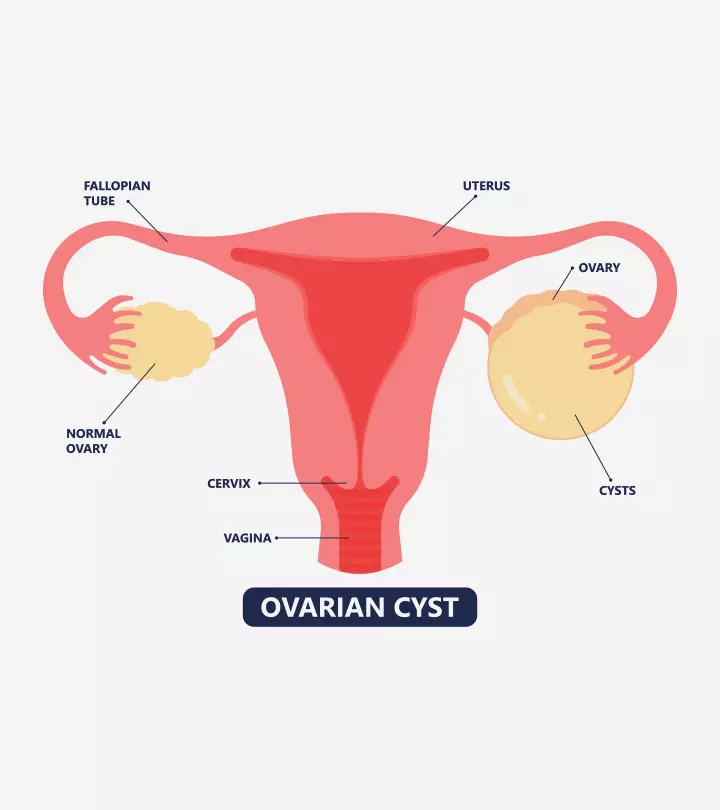
Shutterstock
Baby poop color and texture can help parents and caregivers know if the baby is doing well. Newborn’s poop has a broad color range and is completely different in color and texture from adult poop. During the first few months after birth, you will notice many changes in your infant’s poop color and texture. These changes can be due to diet and the baby’s overall health. But, then, sometimes, these changes may be due to unidentifiable causes and may not mean anything necessarily. In most cases, poop color changes aren’t a cause of worry. However, some changes in baby poop color or texture may indicate an underlying health problem in some cases. Therefore, it is good to be watchful of changes in the baby’s poop color and texture so that you can talk to the pediatrician and clarify your doubts, if any. Read on to learn about the various colors and textures of baby poop, helping you differentiate between normal and abnormal stools.

Key Pointers
- The normal baby poop is mustard yellow or bright yellow.
- Several underlying reasons may cause red, white, and gray stool.
- The Bristol Stool Scale helps identify abnormal poop.
- If you notice a change in their poop color and texture, it may help to consult a physician to clarify your doubts.
Poop Color Chart
The following color chart for feces can come in handy when in doubt (1).

1. Black
The baby’s first stool is known as meconium, which can be black to blackish-green in color. It has a tar-like consistency. It is formed of amniotic fluid, cells, mucus, bile, and water. It is sterile and does not stink. This black stool is normal in the first few days of life (2). Babies pass meconium in the first 24 to 48 hours (3).
It is necessary to mention to the pediatrician if you don’t see meconium within 48 hours after birth. The poop begins to change color about three days after birth. If you see black poop after three days, you should inform your healthcare provider. After the meconium has passed, black stools might indicate bleeding in the stomach or small intestine (4) (5).
2. Mustard yellow
Mustard yellow poop color is normal and is seen in breastfed babies (4). It may also be seedy in appearance (6).
3. Bright yellow
All shades of yellow poop are usually normal in babies (6). Bright yellow poop is normal and can be seen in babies who are exclusively breastfed and babies on formula feed.
4. Orange
Orange-colored poop is normal in babies. These colors come from digestive juices, gut bacteria, and bile secretions. Eating foods high in beta-carotene, like carrots, pumpkins, or sweet potatoes, may also be a cause. In some cases, certain medications, such as antacids or the antibiotic rifampicin, may also lead to this color change. Less commonly, an issue like a blocked bile duct may be responsible (7).
5. Greenish tan

Greenish tan stool could be seen at times and is usually normal. It is seen more in formula-fed babies (8). The green color in breastfed babies may also appear if the mother has consumed green leafy vegetables. For babies on solids, feeding green veggies, such as spinach or peas, may also cause green stools. Bile may also bring a green color to the stool (9).
The poop looks bright green and frothy in babies who consume more foremilk with less fat content (10). Some viruses may also cause bright green poop. If the baby seems uncomfortable or unwell, along with green stools which persist, contact your pediatrician to rule out any abnormalities.
A mother, who blogs anonymously, recalls noticing changes in her baby’s poop color. She says, “When Soraiya was around 5 weeks her poo changed to a mustard colour which the midwife said is normal and should be that colour. Following my own research I also read that it was normal too however it was within that same week that when her poo changed to this mustard colour that he poo had green tinges and then became green…When I explained to the GP about her poo colour she advised the colour was completely normal and that at Soraiya’s age it will vary from yellow to green (i).”
6. Dark green
All shades of the green stool are usually normal and do not always indicate underlying pathology.
Iron supplements for babies may also cause greenish – blackish tools (10). Dark green stool may appear black under poor lighting conditions.
Diarrhea may cause green poop. However, the color and consistency should be correlated before diagnosing diarrhea. Formed stools may also be green in color (9).
7. Red
Bright red stool may indicate bleeding of the lower gastrointestinal tract. Maroon stools may indicate bleeding somewhere in the middle of the gastrointestinal tract (4).
However, 90% of red stools are not caused by blood. Many medicines, such as amoxicillin, may cause red stools. In babies on solids, foods, such as red food coloring, red jello, cranberries, beetroot, tomatoes, red candies, and red cereals, may also cause red stools (9). Although not always a matter of panic, it is best to discuss red stools with the baby’s healthcare provider.
 Things to know
Things to know8. White
White poop in babies, although rare, may be caused by the absence of bile and could indicate an issue with the liver or gallbladder (4).
White stools may also indicate a rare disorder known as biliary atresia. It is advised to contact the doctor if the baby’s stool appears white or pale yellow especially in the first 3-4 months of life (11).
9. Gray

Babies who are on a milk-only diet might have gray stools. Medicines, such as antacids with aluminum hydroxide or barium sulfate from a barium enema, may also cause gray stools (9). In babies with biliary atresia, the stool color may appear grayish. It is best to consult a pediatrician if the baby passes gray stools.
What Does The Poop Texture Mean?
Correlating the poop color and consistency is the correct way to gauge your baby’s health.
Stool in babies is usually soft. Some alterations in the consistency of the baby’s stool may indicate an underlying issue. Very watery or hard stools might indicate the need to see the doctor.
The following are the various types of poop consistencies (10).
1. Newborn poop consistency
The newborn poop is very sticky and tar-like in its consistency. However, it changes in just a few days after birth to a more loose and pasty consistency.
2. Breastfed baby’s consistency
A breastfed baby’s poop is runny but not watery and may have little whitish curd-like particles. It can be seedy or grainy, too.
3. Formula-fed consistency

Formulas are harder to digest, making the stool consistency harder and thicker. The poop of formula-fed babies moves slower through their intestines. Many formulas are iron-enriched and might lead to variation in the poop color.
4. Solid-eating baby’s consistency
The bowel movement of babies fed on solids is thicker and similar to peanut butter in its consistency. It is mushy and has a bad odor. At times the digestive system is not able to process the food and some particles of undigested food are also seen in the poop (12). It can happen when the baby does not chew food properly or if the food passes through the intestines very quickly. It also happens in the initial weaning period.
5. Constipation consistency
Breast milk makes digestion easy whereas babies on formula are more prone to get constipation. Brown, hard, small, or large pebble-like or knobby poop may indicate constipation. The baby might be uncomfortable, in pain, or cry while trying to pass stool during constipation.
 Caution
Caution6. Diarrhea

Although the baby’s poop isn’t as solid as that of adults, if it is very liquidy, frequent, and watery, it could indicate diarrhea. The poop appears like it is made of more water and fewer solids. Diarrhea in babies may lead to dehydration. Hence, it should be addressed by a medical practitioner.
7. Mucousy or frothy stools
A baby may have mucousy poop due to various reasons. Food allergies, foremilk/hindmilk imbalance, excess saliva production due to teething, a viral infection, and malabsorption of nutrients from breast milk are some of the reasons why babies might have mucousy stools. Mucousy stools may even lead to a diaper rash. If a baby is having frequent explosive poops that look green or frothy, it could mean they are getting too much lactose (14). It is advisable to consult a doctor to find out the cause of mucousy stools.
8. Blood in stools
Straining due to constipation may cause tears or tiny hemorrhoids in the anus. It may lead to the appearance of blood streaks in the baby’s poop (15). Blood-tinted loose motions may indicate a bacterial infection (16).
Tiny seed-like particles or flecks of black blood in poop may appear if the baby sucks milk from the mother’s sore, cracked, and bleeding nipples. Blood in the baby’s stool may not always be due to an underlying issue. However, it is recommended to talk to the baby’s doctor. If other symptoms, such as fever, pain, or vomiting, accompany blood in stools, it may require emergency medical attention.
Bristol Stool Scale
The Bristol stool scale can help you understand the different poop consistencies easily.

The following inferences may be derived from Bristol’s stool scale (17).
- Type 1 and type 2 are difficult to pass and may indicate constipation.
- Type 3 and 4 are ideal and desirable consistencies.
- Type 5 may indicate progression to diarrhea.
- Type 6 and 7 indicate diarrhea.
When To See A Doctor?
Babies’ stool appearance is a mirror of their overall health. Diarrhea and constipation should be brought to the pediatrician’s attention. If any other signs, such as fever, vomiting, and excessive crying, are present, the doctor may check for infections.
Moderate or severe diarrhea may lead to dehydration. The following are the signs of dehydration in babies (18).
- Fewer soiled diapers due to less urination
- Less playful
- Dry or patchy mouth
- Fewer tears when crying
- Sunken soft spot on the head
- Loose motions
- Excessive sleepiness
- Sunken eyes
- Wrinkled skin
Frequently Asked Questions
1. How do I stop my baby’s poop from being green?
Here are some ways you may resolve your baby’s green poop (5):
- If your baby’s poop is green and frothy, they may be consuming more low-fat than full-fat milk. Hence, ensure your baby drains one breast completely before switching to the other breast.
- If your bottle-fed baby has dark green poop, their formula may be iron-fortified. Check its label and try switching to another formula after consulting your pediatrician.
- If your baby has green poop due to a viral infection, consult a doctor.
2. What does the poop of a baby with lactose intolerance look like?
A baby with lactose intolerance will have bulky, frothy, and watery poop (19). They may also have diarrhea and cry when passing stools.
3. Is it normal for breastfed babies to have different poop colors than formula-fed babies?
Yes. It is normal for breastfed babies to have different colored poop than formula-fed babies. For example, breastfed babies usually have poop that is yellowish or mustard in color, whereas formula-fed babies have poop that is tan or brownish (10).
4. How long can babies go without pooping?
It is normal for breastfed babies older than eight weeks to not poop for about four to five days at a stretch. Older babies can go for up to one week without pooping if they are exclusively breastfed (20).
5. What to do if my baby’s poop is consistently hard?
Hard stools may indicate constipation in babies. Keep your baby well-hydrated and consult your pediatrician for dietary changes or other suggestions.
New parents often get worried about the newborn poop’s color and texture. The baby’s poop color may change multiple times during the first two weeks. It depends on your diet, the type of infant formula, and many other factors. The texture of the baby’s poop also depends on whether the baby is exclusively breastfed, on a combination of formula feed and breastmilk, and other factors. As the baby transitions to eating solids, the poop texture may change again. If you notice any abnormality in the texture or color of the baby’s poop, bring it to your pediatrician’s notice.
Illustration: What Does Your Baby Poop Color Mean & When To See A Doctor?

Image: Dall·E/MomJunction Design Team
A newborn baby’s poop can vary in color and frequency. Understand what’s normal and what’s not in this informative video!
Personal Experience: Source
MomJunction articles include first-hand experiences to provide you with better insights through real-life narratives. Here are the sources of personal accounts referenced in this article.
i. Baby Poo – my journey so far.https://thesoultamer.com/2018/11/19/baby-poo-my-journey-so-far/
References
- Baby poo color chart.
https://www.pregnancybirthbaby.org.au/baby-poo-guide - Meconium.
https://my.clevelandclinic.org/health/body/24102-meconium - Meconium.
https://www.ncbi.nlm.nih.gov/books/NBK542240/ - What Can Your Child’s Poop Color Tell You?
https://www.hopkinsmedicine.org/health/conditions-and-diseases/stool-color-guide - Baby Poop Colors: What Do They Mean?
https://health.clevelandclinic.org/the-color-of-baby-poop-and-what-it-means-infographic - 12 Types of Baby Poop & What They Mean.
https://www.unitypoint.org/news-and-articles/12-types-of-baby-poop-what-they-mean-infographic - Is My Child’s Poop Normal?
https://mypositiveparenting.org/2019/07/08/is-my-childs-poop-normal/ - Aysu Duyan Çamurdan et.al; (2014); Defecation patterns of the infants mainly breastfed from birth till the 12th month: Prospective cohort study.
https://pubmed.ncbi.nlm.nih.gov/25910285/ - Stools – Unusual Color.
https://www.seattlechildrens.org/conditions/a-z/stools—unusual-color/#:~:text=Strange%20colors%20of%20the%20stool - Poos and wees.
https://www.pregnancybirthbaby.org.au/poos-and-wees#green - What is Biliary Atresia?
https://www.cincinnatichildrens.org/health/b/biliary-atresia#:~:text=Biliary%20atresia%20is%20a%20rare - Introducing Your Baby to Solid Foods FAQs.
https://www.ucsfbenioffchildrens.org/education/faq-introducing-your-baby-to-solid-foods - Baby Poop Guide.
https://www.childrenscolorado.org/just-ask-childrens/articles/baby-poop-guide/#:~:text=Infant%20poop%20consistency - Baby poo – what’s normal?
https://www.breastfeeding.asn.au/resources/baby-poo-whats-normal - Rectal Bleeding.
https://my.clevelandclinic.org/health/symptoms/14612-rectal-bleeding - Bacterial Diarrhea.
https://www.ncbi.nlm.nih.gov/books/NBK551643/ - Bristol Stool Form Scale.
https://pediatricsurgery.stanford.edu/Conditions/BowelManagement/bristol-stool-form-scale.html - Signs of Dehydration in Infants & Children.
https://www.healthychildren.org/English/health-issues/injuries-emergencies/Pages/dehydration.aspx#:~:text=Parched%2C%20dry%20mouth - Lactose intolerance in babies.
https://www.healthywa.wa.gov.au/Articles/J_M/Lactose-intolerance-in-babies - Constipation in babies (0 to 6 months).
https://www2.hse.ie/conditions/constipation-children/constipation-in-babies-0-to-6-months/
Community Experiences
Join the conversation and become a part of our nurturing community! Share your stories, experiences, and insights to connect with fellow parents.
Read full bio of Dr. Elna Gibson
Read full bio of Dr. Ritika Shah
Read full bio of Rohit Garoo
Read full bio of Ghazia Shah
















